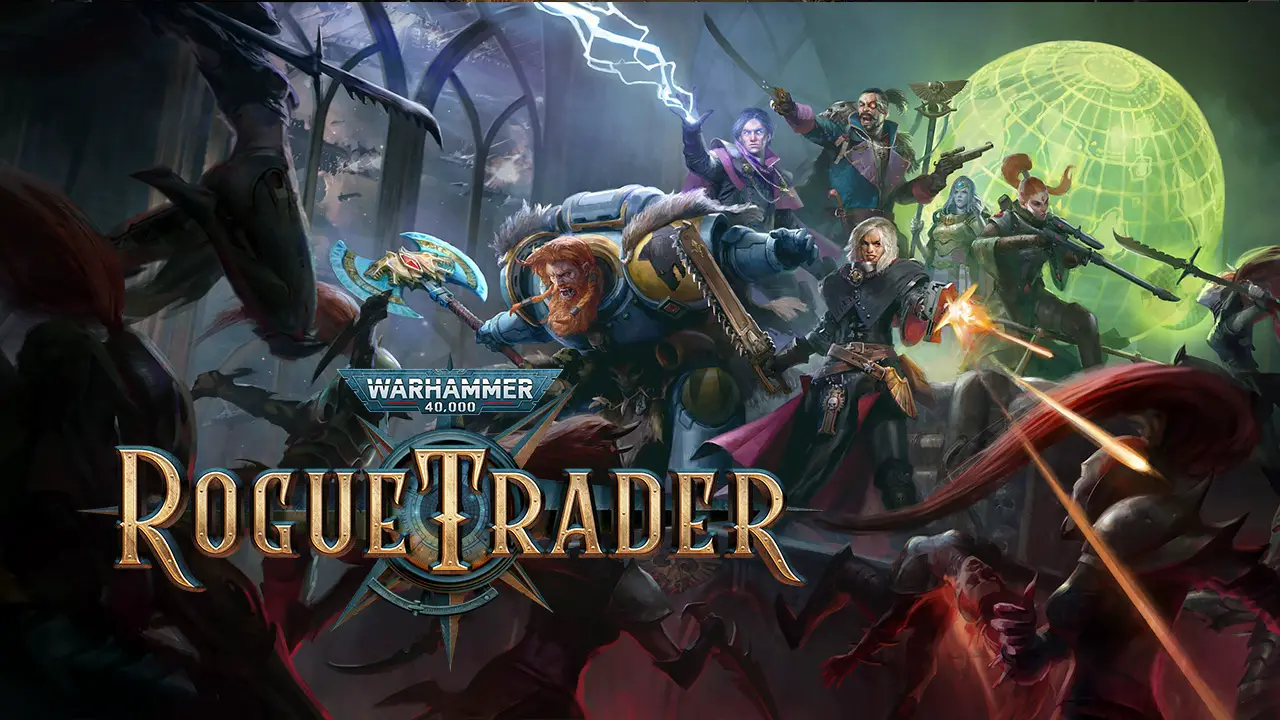The Warhammer 40k universe is an ever-expansive and absolutely massive sci-fi universe. The very first time that the world caught a glimpse of the 40k universe was all the way back in 1987 with the release of a sci-fi miniature wargame based on the Second Edition Warhammer Fantasy Battle. This alternate sci-fi version of Warhammer Fantasy Battle was titled Warhammer 40,000: Rogue Trader. This is where the CRPG gets its name from. Makes you wonder if Games Workshop is hinting at something big with this one.
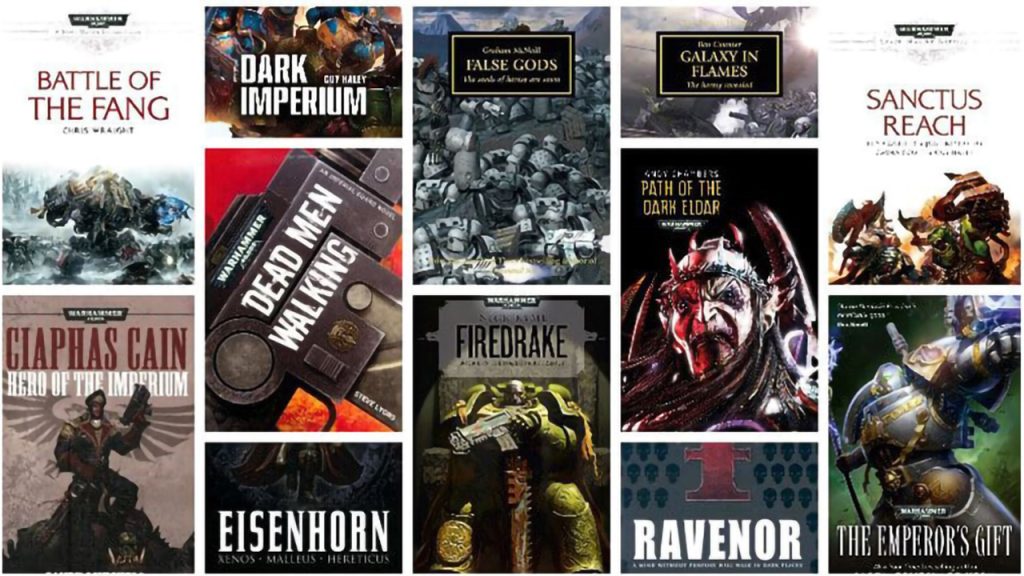
The Novels
After just three years, Games Workshop started publishing novels set in the 40k universe through BL Publishing. A division of the company that is now known as Black Library, devoted to publishing literature from Games Workshop’s ever growing IPs. They publish works such as full-length novels, novellas, short stories, graphic novels, and audio dramas. This constant stream of content gave fans the opportunity to dive even deeper into the world and lore of the Warhammer 40k universe.
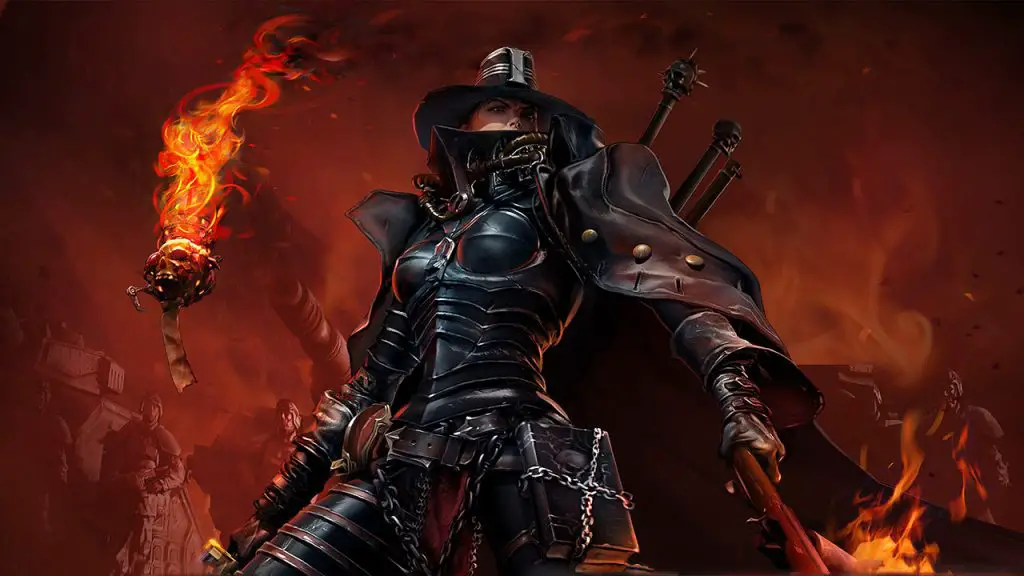
The Video Games
Games Workshop recognized the changing landscape of entertainment with the advent of video games. During the 1990s, they started licensing their IPs to different video game developers. This further expanded their fan demographic to the younger generations. One of the earliest games set in the universe was even made by Electronic Arts. Yeah, that electronic arts.
But despite the growing success of their video game divisions, the games had a slight problem. Most of the Warhammer 40k video games during the 90s and the 2000s focused more towards strategy games. As if to mimic the essence of the tabletop wargames to a certain extent. While the strategy game design was stellar for conveying the tabletop game in video game form, they were evidently lacking in terms of narrative. Because of this, despite having an abundance of video games over the decades, lore and information about the 40k universe remained too fragmented for narrative enjoyers to immerse themselves in.
To Remedy The problem
Well, one can argue that with the existence of a myriad of novels and other literature works, the 40k universe can still easily be explored by fans. However, a majority of the new generation of tech natives has slowly replaced literature with other forms of media. Aside from books, fiction has now been presented in many different forms. Movies, videos, graphic novels, and video games are a few examples. Video games alone encompass a wide demographic of fans.
We can acknowledge the existence of people who prefer to stick to whatever a game has to offer rather than scouring other forms of media to dive deeper into an IP. Perhaps Games Workshop also recognizes this phenomenon. So what better way to present an expansive world through video game form than an RPG? And for this one, they chose to go with the RPG subgenre that caters to lore, world-building, and narrative the most, CRPGs.
Rogue Trader
The Warhammer 40k: Rogue Trader CRPG admittedly isn’t a revolutionary game in terms of being an RPG. That title actually belongs to Baldur’s Gate 3. The game presents a pretty standard form of CRPG gameplay. Turn-based combat, intensive character dialogues, tabletop aesthetics, loot and inventory management, the whole nine yards plus some additional unique features, but then again, they don’t really offer much in terms of innovation for the genre. It is, however, revolutionary as a Warhammer 40k video game.
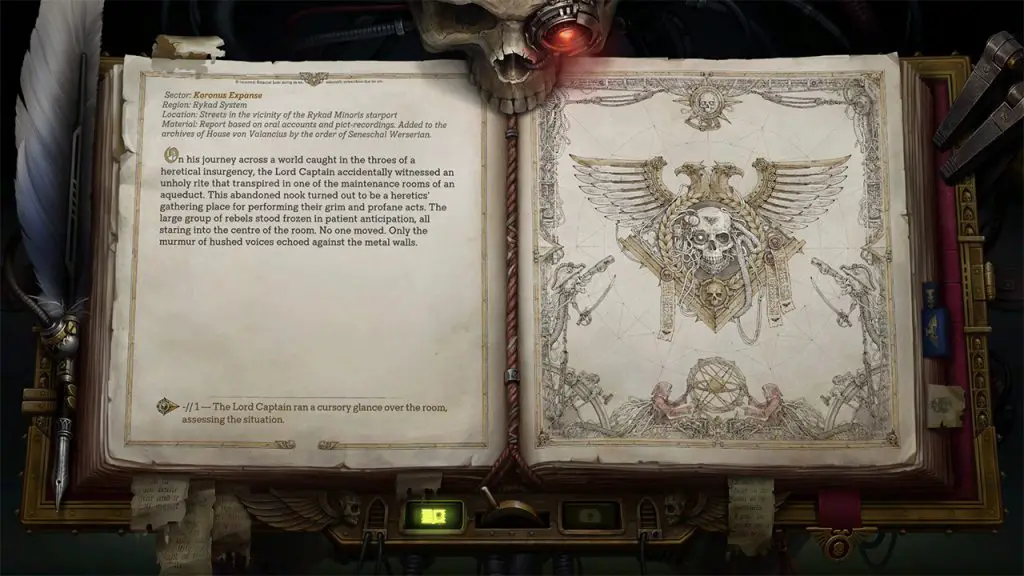
A Compendium Of Lore
Although the earlier Warhammer 40k video games did amazingly well in encapsulating the essence of the tabletop wargame, their presentation for narrative, especially the lore, was somewhat lackluster. Usually, it only serves as a means for gameplay. To be clear, I’m not saying that the narrative in other games is bad; they just don’t go that deep in terms of story. CRPGs, however, are entirely focused on narrative. The genre puts emphasis on lore, characters, and world-building. Going in-depth, even in the deepest recesses of a fictional universe.
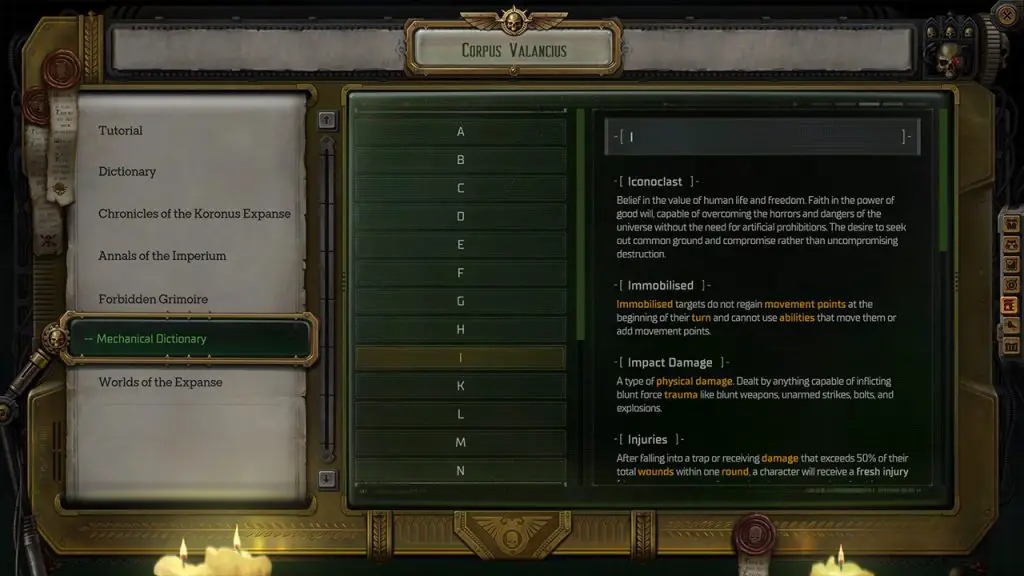
The 40k Lexicon
Right off the bat, Warhammer 40k: Rogue Trader presents you with this one tiny feature that most players would probably ignore. If you’re a massive 40k fan, however, then you’re probably gonna be all for it. Featuring a nested or “hyperlink” system, the game adds additional information on top of dialogues and sequences, sort of like an embedded glossary of sorts. This comes in handy for players who aren’t yet well-versed in Warhammer 40k terminologies. If you’d rather read through all these terminologies all at once than wait for them to pop up in dialogue, you can do so via the Corpus Valancius. Even if you’re a massive 40k connoisseur, there might still be stuff that you’ve missed which this game can give you the information to.
But that’s not all there is to it. If the only thing this game had was its hyperlinked glossary system, then I wouldn’t have really written this article. Paying close attention to what the game has to offer, it starts looking like an entire 1st edition encyclopedia in video game form.
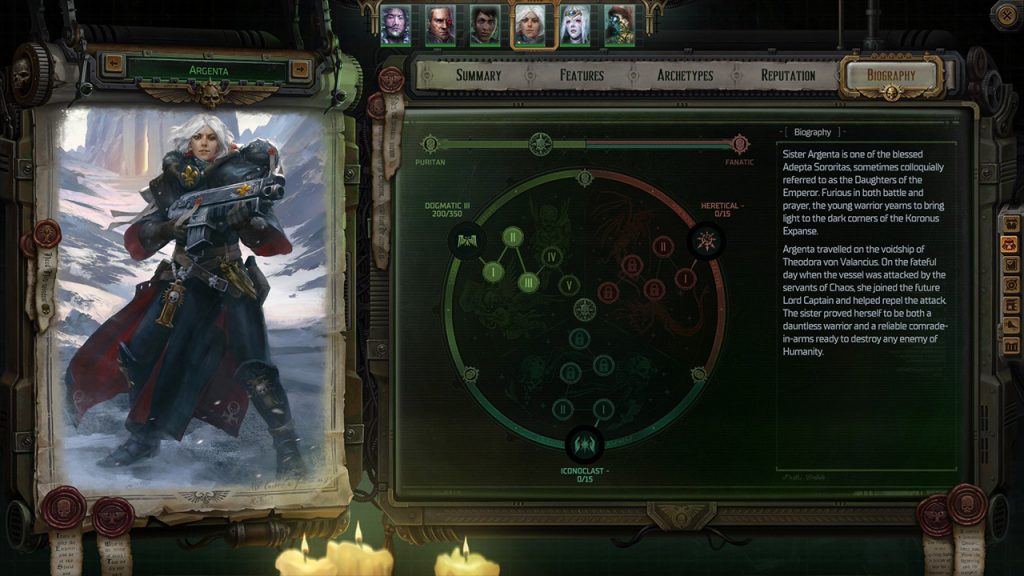
Character Backgrounds and Archetypes
Characters have biographies that highlight their backgrounds. Aside from that, interacting with them also reveals some interesting back stories and information about the world.
Like how commander types would bolster the morale of their allies and have them do more actions than they normally would. How assassin types would break through the back lanes and take out key targets. And like how soldiers would lay out suppressive fire to break the enemies’ ranks. There are many such ways that the game allows its players to deal with various situations using different archetypes. Understanding how each archetype works inadvertently gives you a deeper understanding of how these types of people operate in the larger Warhammer 40k universe. For example, this game helped me understand the ramblings of my character in Warhammer 40k: Darktide.
The voidship itself is teeming with imperial life as well as information and lore. Players can talk to crew members around the voidship’s bridge for inquiries about their posts. Exhausting their dialogues, you’ll be able to know who they are, their background before filling in their positions, and the specific things their role entails them to do. Aside from this, random voidship events will occur from time to time, further exploring the life and going on within a voidship. This little bit of random event creates a surge of immersion that not only broadens your outlook on the Warhammer 40k universe but also helps with the game’s pacing.
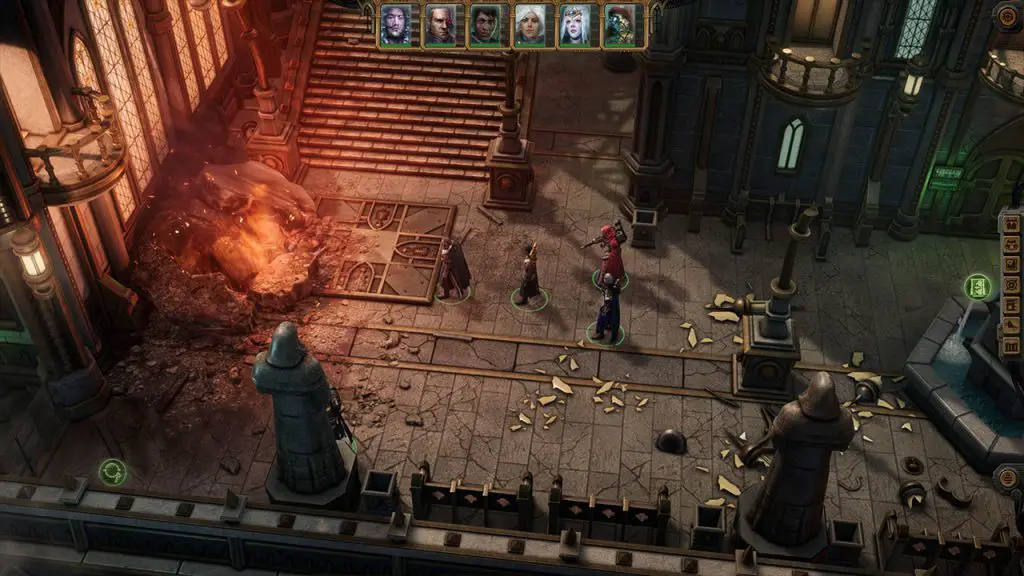
Lore and Narrative
Aside from the vast library of information found under menus and dictionaries, Warhammer 40k: Rogue Trader also presents various ways to push world-building. Your adventures will take you to a bunch of different planets and space stations, each showcasing the unique way of life of its denizens. The game mainly uses dialogue as a means of narrative, but it also has other methods that fill in the gaps to keep the immersion going.
Temperament
The way the game pushes the story forward feels more like a means for you to explore the universe of Warhammer 40k than actually building up a plot for the main characters. The main character’s temperament also dictates which perspective the players will see the world unfold. While the archetypes help govern certain playstyles, the character’s temperaments or beliefs help govern the direction of the story.
The game has three beliefs: dogmatic, iconoclast, and heretical. For massive lore fans, this can be a reason to replay the game at least three times in order to see the 40k universe from all three different perspectives.
Visual Story Telling
As soon as you reach a planet, you’re immediately treated with the game’s visual storytelling. The state of a base or station alone already hints at players on what to expect in its sector. Playing through Chapter 1, most sectors were under strife of some shape or form. It’s quite cheap to simply show people shooting each other as a means of visual storytelling, but that’s not quite the case here. Going through each area, the level slowly eases you in on what exactly happened. Despite knowing the fact that the sector is a battleground, there still exists a looming mystery that slowly unravels as you go deeper.
You’d have to pay close attention to the environment to understand what I mean. But what I’m trying to say here is even the environment is painstakingly hand-crafted to aid the game’s narrative through visual storytelling.
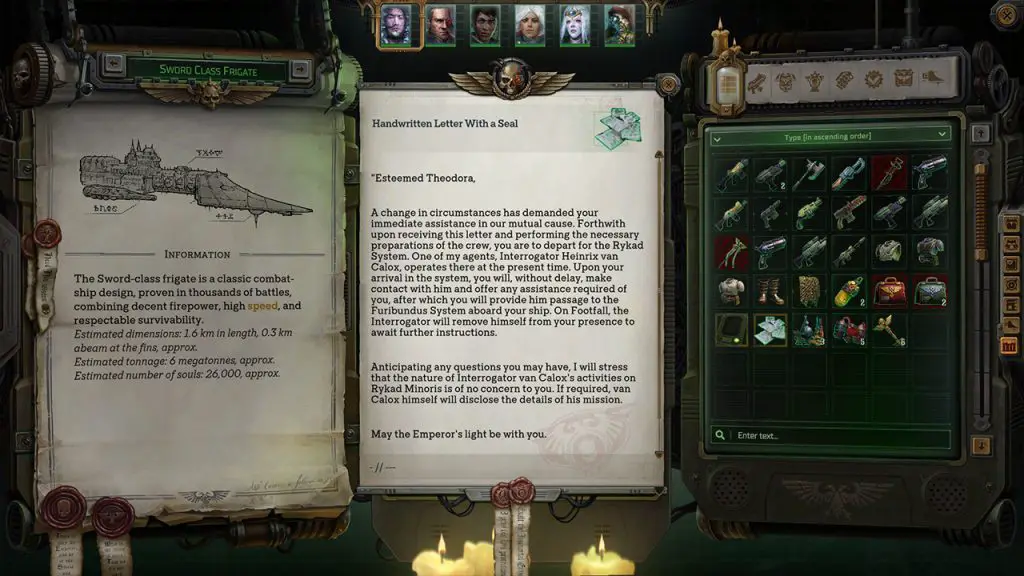
Logs and Memos
Besides the game using the environment for its story, it also uses logs and memos found as loot along your adventures. It’s easy to scoff at these readable notes as simply filler information to give background to an area or event. Well, for the most part, they are. But considering that this is a CRPG, I highly suggest that you pay attention to each and every one of them.
As earlier in the game, I have found that these logs and memos actually serve some purpose. Some of them give clues for certain puzzles and activities that are subtle enough for most players to not pay attention to. By doing this, you will be missing out on a lot of extra lore.
Items and Equipment
This is the only part where I felt a little bit disappointed with what they didn’t do. So, unique weapons exist in the game. Named weapons that were memorabilia of other characters or just relics from the battlefield. These unique weapons have brief information about them, going through their background and, usually, who owned them.
However, common weapons don’t really get this treatment. I may be nitpicking, but having that consistency of lore presentation extended to even common weapons would’ve been a nice little cherry on top. Like details on when bolters are made, or why last weapons are so popular in the imperium and other tiny little details that players wouldn’t even think twice about. But then again, there’s probably only a few people that actually care about stuff like that.
The Bottom line
To put it briefly, Warhammer 40k: Rogue Trader is a fusion of a novel, tabletop game, and Warhammer 40k encyclopedia in video game form. This reason alone makes the game such an important figure in the vast library of Warhammer 40k video games. Catering to fans of the universe who want to get into 40k’s lore without having to check out other forms of media.
Just being filled with an extensive amount of knowledge and lore about the 40k universe makes it a valuable addition to your library. And with what I’ve seen so far, I have an inkling that fans of the series will be referencing Warhammer 40k: Rogue Trader for their 40k discussions sometime in the future.


